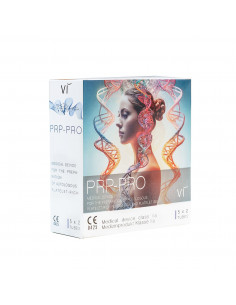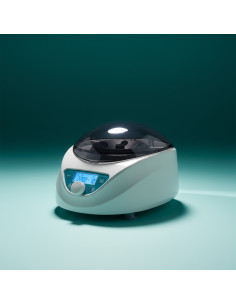PRP treatment
100335
Borosilicate tubes with 0.0232 mg added melatonin.
The inner wall is coated with melatonin, which is released during the preparation of the autologous blood in the laboratory.
Made from high-quality borosilicate glass for high sample purity.
The vacuum system facilitates blood collection. An anticoagulant (e.g., heparin or citrate) must be added before...
immediately available
€98.00
PRP tubes | Vi PRP-PRO | with Anticoagulant PU 10 pieces
100101
The Vi PRP-Pro PRP tubes provide the fastest and most effective solution for the extraction and preparation of platelet-rich plasma (PRP) from patient blood – delivering outstanding results and maximum efficiency.
Optimal blood release through specialized anticoagulant
Minimizes clotting for precise results
High quality for reliable PRP treatments...
immediately available
€129.19
SERVOspin Evolve Centrifuge – 6×15 ml angle rotor – ideal for PRP preparation
100416
Compact, quiet laboratory and practice centrifuge for sample and plasma preparation; suitable for PRP according to tube/protocol specifications.
54° angle rotor for 6×15 ml
300–5000 rpm, up to 2600 g RCF
Digital control, RCF display, 2 program memories
Imbalance control, electronic lid lock, emergency opening
Quiet operation (~56 dB), 100–240 V
Ideal...
immediately available
€831.81
PRP/PRF tubes - 10 pieces | without anticoagulants
100104
Density Platelet Gel PRP/PRF is the simplest and most efficient way to obtain and process platelet-rich plasma (PRP) from blood. The tubes contain no separating gel and have no anticoagulants, making them a safe and effective way to treat injuries, pain and other conditions.
Here are some advantages of Density Platelets Gel PRP/PRF tubes:
Easy and...
immediately available
€103.99




